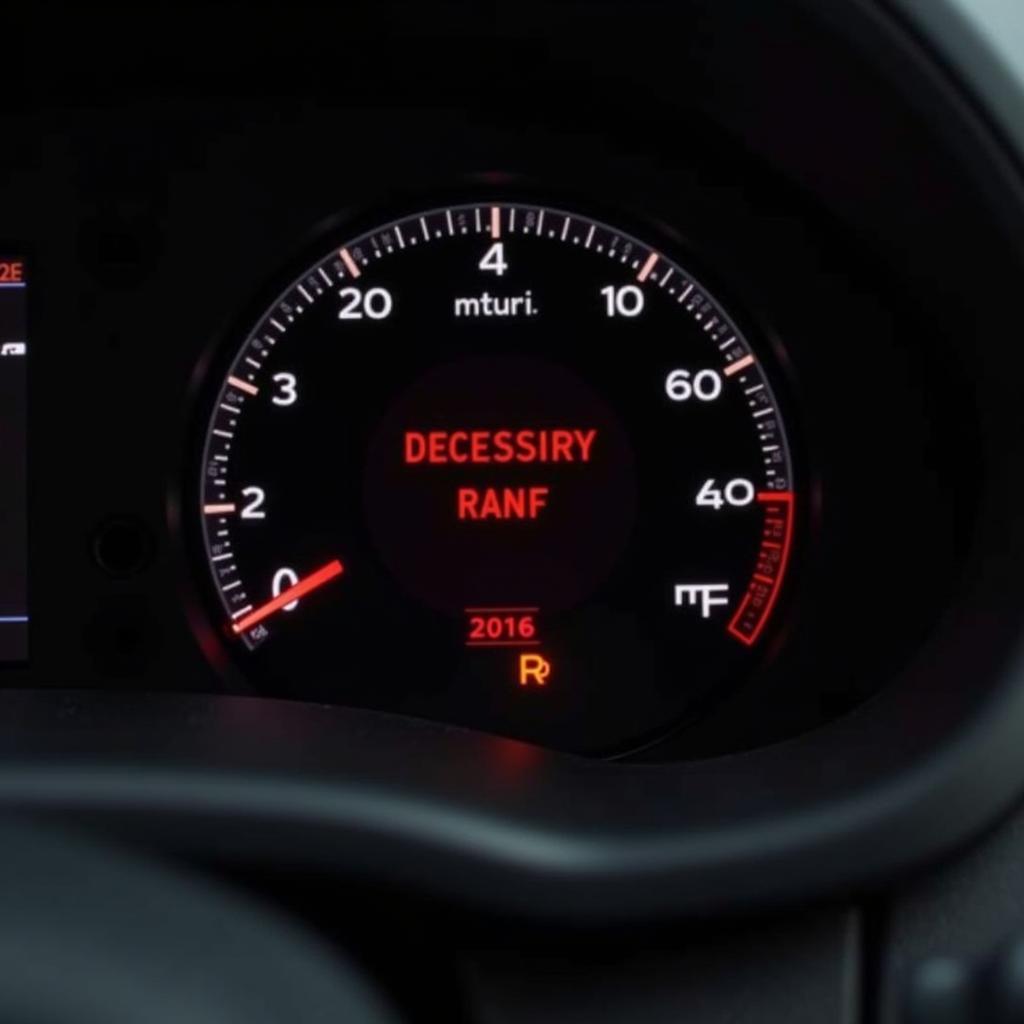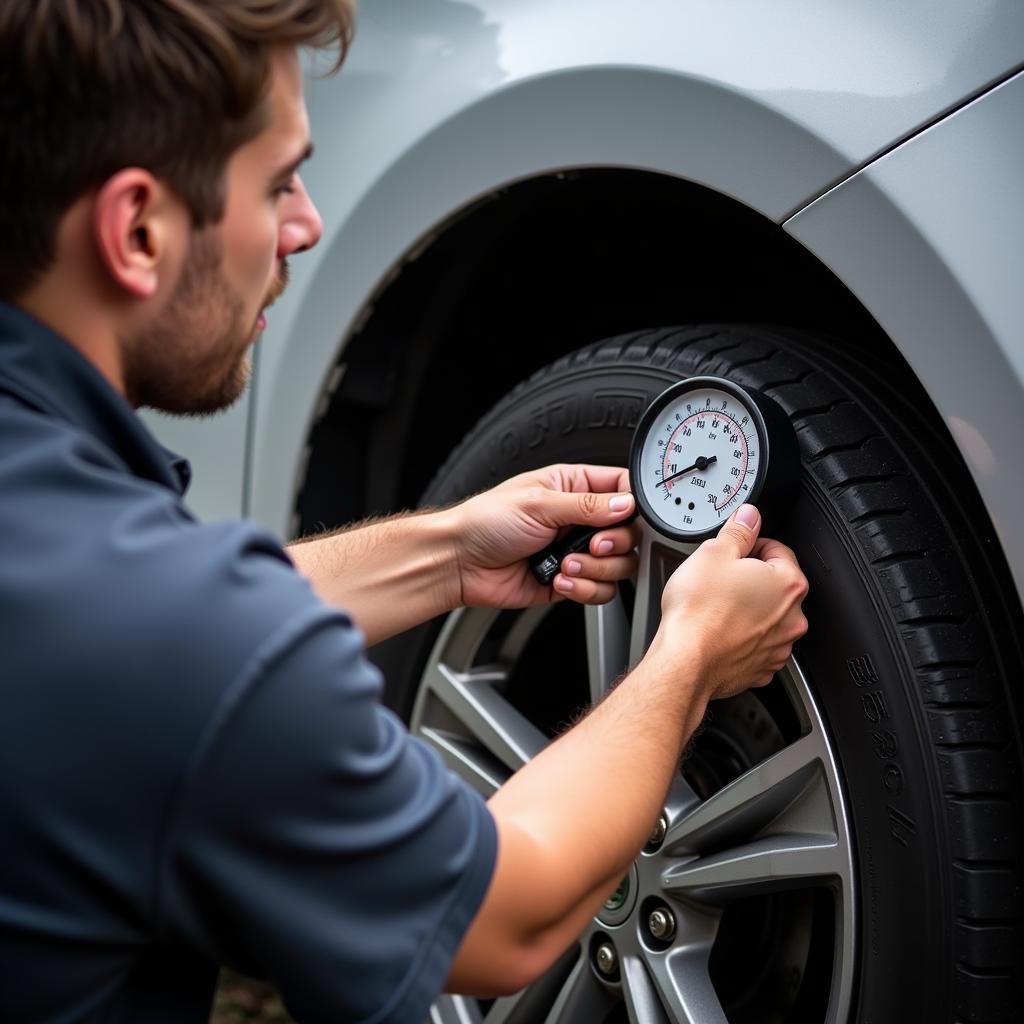The dreaded tyre pressure warning light on your 2016 Seat Ibiza can be a source of anxiety, but understanding its cause and potential solutions can empower you to address the issue effectively. This comprehensive guide will delve into the common reasons behind this warning light, provide step-by-step instructions for troubleshooting, and offer expert insights to keep you safe on the road.
 Seat Ibiza Dashboard with Tyre Pressure Warning Light
Seat Ibiza Dashboard with Tyre Pressure Warning Light
Understanding Your Tyre Pressure Monitoring System (TPMS)
The 2016 Seat Ibiza utilizes a direct TPMS, meaning each tyre has a sensor that transmits pressure readings to your car’s computer. When the pressure in one or more tyres drops significantly below the recommended level, the TPMS triggers the warning light on your dashboard.
Common Causes of Tyre Pressure Warning Light
Several factors can lead to the illumination of the tyre pressure warning light on your Seat Ibiza:
- Puncture: A nail, screw, or sharp object can cause a slow leak, gradually reducing tyre pressure.
- Valve Stem Issue: A damaged or loose valve stem can allow air to escape, triggering the warning light.
- Seasonal Temperature Changes: Cold weather can cause the air inside your tyres to contract, resulting in lower pressure readings. Conversely, hot weather can lead to increased pressure.
- Sensor Malfunction: While less common, a faulty TPMS sensor can transmit inaccurate readings, illuminating the warning light.
- Wheel Change: If you’ve recently had your tyres rotated or changed, it’s crucial to ensure the TPMS sensors are correctly reset.
 Checking Tyre Pressure on a Seat Ibiza
Checking Tyre Pressure on a Seat Ibiza
Troubleshooting the Tyre Pressure Warning Light
Follow these steps to diagnose and address the issue:
- Check Your Tyre Pressure: Use a reliable tyre pressure gauge to check each tyre, including the spare. The recommended pressure is typically located on a sticker inside the driver’s side door jamb or in your owner’s manual.
- Inflate Tyres to Correct Pressure: If the pressure is low, inflate the tyres to the specified level. Remember to check and adjust pressure when the tyres are cold for the most accurate reading.
- Inspect Tyres for Damage: Carefully examine each tyre for any signs of punctures, cuts, or bulges. If you notice any damage, it’s essential to have the tyre repaired or replaced by a professional.
- Inspect Valve Stems: Check each valve stem for signs of damage or looseness. If you find a faulty valve stem, a tyre technician can easily replace it.
- Reset the TPMS: Refer to your owner’s manual for specific instructions on resetting your Seat Ibiza’s TPMS. This usually involves driving the car at a certain speed for a specific distance after adjusting tyre pressure.
“It’s crucial to address the tyre pressure warning light promptly. Driving on underinflated tyres can lead to reduced fuel efficiency, compromised handling, and even a dangerous blowout.” – John Miller, Automotive Engineer
 Replacing a TPMS Sensor on a Seat Ibiza
Replacing a TPMS Sensor on a Seat Ibiza
When to Seek Professional Help
If the warning light persists after following the troubleshooting steps, it’s crucial to consult a qualified mechanic specializing in TPMS systems. They have the expertise and diagnostic tools to identify and address issues such as:
- Faulty TPMS Sensor: A mechanic can diagnose a malfunctioning sensor and replace it to ensure accurate pressure readings.
- TPMS Module Issues: In rare cases, the TPMS control module, responsible for receiving and interpreting sensor data, may require diagnosis and potential replacement.
Conclusion
Addressing the tyre pressure warning light on your 2016 Seat Ibiza is crucial for maintaining optimal safety and performance. By understanding its potential causes and following the troubleshooting steps outlined above, you can often resolve the issue independently. However, seeking professional help is crucial for persistent warnings to ensure accurate diagnosis and repair, keeping you safe and confident on the road.

